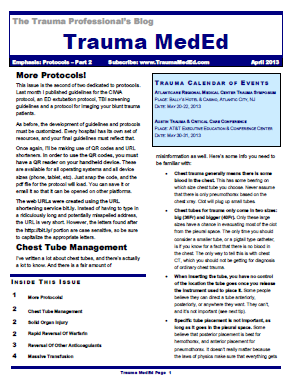A 24 year old restrained female is involved in a T-bone type motor vehicle crash. She sustains a moderate to severe traumatic brain injury and is intubated and sedated. On exam, she has a few abrasions over her left flank, and no other physical findings. Head CT shows some subarachnoid blood, and abdominal CT is negative.
She is placed in the ICU and slowly becomes more responsive. However, her FIO2 has to be increased several times due to poor oxygenation. By day 3, she is on 90% O2 and has diffuse infiltrates in her lung fields.
What’s the problem?!
This is a classic presentation of a missed abdominal injury. Restrained patients are at risk for intestinal injuries, even with a t-bone mechanism and little to no seat belt sign. Physical exam may be helpful, but abdominal pain/tenderness may be masked by head injury.
A repeat CT scan was performed, which showed free fluid and a few bubbles of free air. The patient was taken to the OR and a bucket handle injury to the distal ileum was found, with devitalized and leaking intestine. This was resected and primary anastomosis was performed. Within 2 days, the patient was on 40% O2 and was ready for extubation two days later.
Bottom line: Unexplained respiratory failure after blunt trauma, especially if no chest injury has occurred, is nearly always due to a missed abdominal injury. The initial CT is a snapshot that is valid for only a few hours. Re-image with CT or ultrasound, and operate promptly if any significant change in patient condition occurs.
Related posts:
Fictional case, not treated at Regions Hospital.



